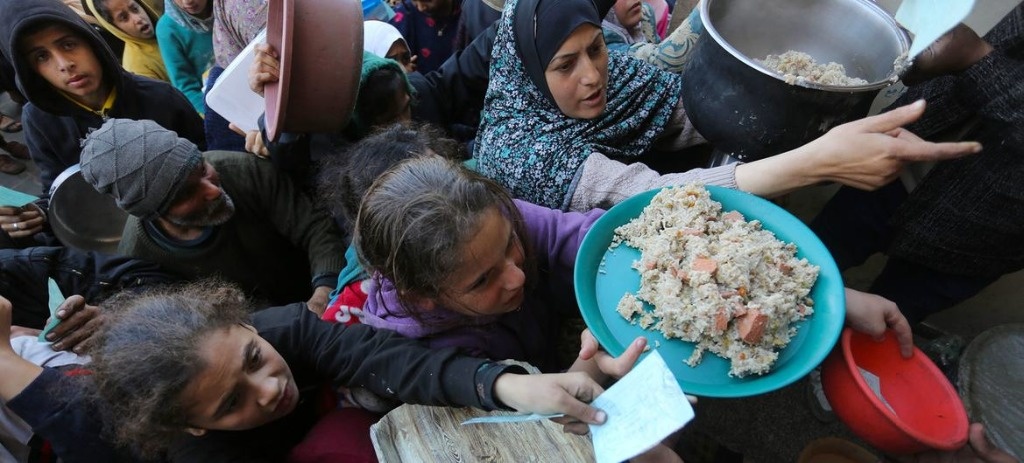Paris. Food insecurity worsened around the world in 2023, with nearly 282 million people needing emergency aid due to conflicts, especially in Gaza and Sudan, as well as extreme weather events and economic crises, a report released on Wednesday revealed.
The number of people in critical situations increased by 24 million compared to 2022, according to this report prepared jointly by 16 agencies of the United Nations (UN) and humanitarian organizations.
Worrying situation in Haiti
In Latin America, the case of Haiti stands out, where violence and political instability cause 1.8 million people to find themselves in a situation of extreme food vulnerability, that is, 200 thousand more than in 2022.
Globally, it is the fifth consecutive year in which the number of people in a state of acute food insecurity increases in the world.
Some 700,000 people were on the brink of famine in 2023, of which 600,000 are in Gaza. A figure that has increased in that Palestinian territory in recent months due to the war between Hamas and Israel.
The situation is worse in Sudan, protagonist of the worst global refugee crisis and at war for a year, and where another 8.6 million people were added to the list of those affected by food insecurity (20.3 million in total in the country). .
“There is a clear deterioration in the context of key food crises such as Sudan and the Gaza Strip,” Fleur Wouterse, deputy director of the emergency and resilience office of the United Nations agency for Agriculture and Food, told the AFP news agency. Food (FAO).
Since the report was launched in 2016 by the Global Network against Food Crises, an alliance that brings together organizations from the UN, the European Union, the United States and other humanitarian organizations, “the number of people experiencing food insecurity has increased from 108 million to 282 million, while prevalence (the proportion of the population affected within the areas concerned) has increased from 11 to 22 percent,” notes Fleur Wouterse.
And the food crisis has persisted since then in Afghanistan, the Democratic Republic of the Congo, Ethiopia, Nigeria, Syria and Yemen, he highlights.
The vulnerability of refugees
In Latin America, the constant arrival of migrants and refugees to Colombia, Peru and Ecuador is a source of concern, in addition to the impact of the El Niño climate phenomenon.
In Colombia, for example, while only 3 percent of the native population faced a severe food situation (1.6 million people), 62 percent of migrants and refugees (2.9 million) were in that vulnerable situation. .
Venezuela is also one of the countries “that has been identified as worrying in all editions” of this report, the authors recall.
Although cereal production increased, inflation was the big problem in the Caribbean country, where “the price of the basic basket continued to be four times higher than the monthly salary.”
“In a world of plenty, children die of hunger. Wars, climate chaos and the cost of living crisis, combined with inadequate action, result in nearly 300 million people facing an acute food crisis in 2023,” laments United Nations Secretary-General António Guterres in the prologue of report.
“Governments must strengthen the resources available for sustainable development,” he urges. Especially as the costs of distributing aid have increased.
“The global food crisis is fundamentally a moral crisis,” the Oxfam organization reacted in a statement.
By 2024, development “will depend on the cessation of hostilities,” says Fleur Wouterse. “As soon as humanitarian accesses” to Gaza and Sudan are possible, for example, aid could “rapidly mitigate” the food crisis, she says.
#million #suffered #acute #food #insecurity #report
– 2024-04-30 15:45:15
